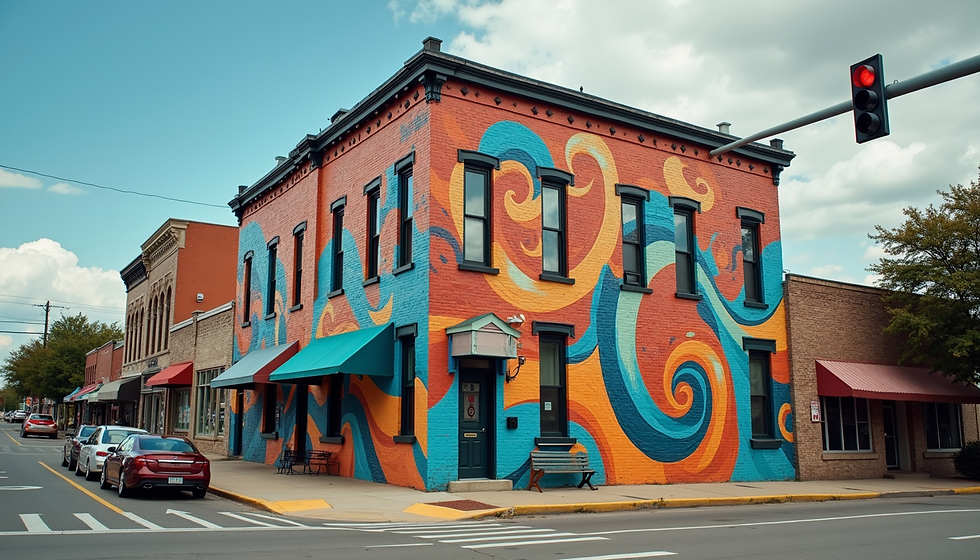The Rise of Modern Bronze Art in Contemporary Design
- craig campbell

- Sep 29
- 4 min read
Bronze has been a favored medium for artists for centuries, admired for its durability and timeless beauty. In recent years, there has been a remarkable resurgence of interest in bronze as a material for contemporary design. This revival is not just about nostalgia; it reflects a deeper appreciation for craftsmanship, innovation, and the unique aesthetic qualities that bronze offers. Today, modern bronze art is making a significant impact in homes, public spaces, and galleries around the world.
The Evolution of Bronze in Art and Design
Bronze has a rich history dating back to ancient civilizations, where it was used to create statues, tools, and decorative objects. Over time, the techniques for working with bronze have evolved, allowing artists to explore new forms and finishes. The traditional methods of casting and patination remain popular, but contemporary artists are also experimenting with mixed media, abstract shapes, and large-scale installations.
This evolution has helped bronze maintain its relevance in the art world. Modern designers appreciate bronze for its versatility - it can be polished to a high shine or left with a natural, weathered patina. This adaptability makes it suitable for a wide range of styles, from minimalist to ornate.

How Modern Bronze Art Enhances Contemporary Spaces
Incorporating bronze art into contemporary design adds a layer of sophistication and warmth. The metal’s natural hues - ranging from golden to deep brown - complement various color palettes and materials such as wood, glass, and stone. This makes bronze an excellent choice for both interior and exterior design elements.
For example, a bronze sculpture can serve as a striking focal point in a minimalist living room, while bronze fixtures and hardware can add subtle elegance to kitchens and bathrooms. Outdoor bronze statues and fountains bring a sense of permanence and artistry to gardens and public parks.
Designers often recommend mixing bronze with modern materials to create contrast and interest. Pairing bronze with sleek metals like stainless steel or matte black finishes can highlight the unique texture and color of the bronze pieces.

Techniques and Trends in Contemporary Bronze Art
Contemporary bronze artists are pushing the boundaries of traditional craftsmanship by incorporating innovative techniques. Lost-wax casting remains a popular method, allowing for intricate details and complex shapes. However, some artists are now using 3D modeling and printing to create molds, which speeds up the process and opens new creative possibilities.
Patination, the chemical treatment that alters the surface color of bronze, is also evolving. Artists experiment with vibrant blues, greens, and even reds, moving beyond the classic brown and gold tones. This experimentation adds a fresh, modern twist to bronze art.
Another trend is the integration of bronze with other materials such as glass, wood, and stone. This fusion creates dynamic pieces that engage multiple senses and invite closer inspection.
For those interested in exploring or collecting modern bronze art, visiting studios like Campbell Sculpture Studio offers insight into the creative process and the latest innovations in the field.

Practical Tips for Incorporating Bronze Art in Your Space
Adding bronze art to your environment can be both rewarding and challenging. Here are some practical tips to help you make the most of this timeless material:
Choose the Right Scale - Consider the size of the bronze piece relative to your space. Large sculptures work well in open areas, while smaller pieces can enhance shelves or tabletops.
Balance with Other Materials - Mix bronze with softer textures like fabric or natural wood to create a balanced look.
Lighting Matters - Proper lighting can highlight the unique textures and colors of bronze. Use spotlights or natural light to enhance the piece’s presence.
Maintenance - Bronze requires minimal upkeep but can benefit from occasional cleaning with a soft cloth. Avoid harsh chemicals that may damage the patina.
Placement - For outdoor bronze art, choose locations protected from extreme weather to preserve the finish longer.
By following these guidelines, you can ensure that your bronze art remains a captivating feature for years to come.
The Future of Bronze in Contemporary Art and Design
The future of bronze in contemporary design looks promising. As artists continue to innovate and explore new techniques, bronze will likely become even more integrated into modern aesthetics. Its ability to bridge the gap between tradition and innovation makes it a unique medium for expressing creativity.
Sustainability is also becoming a key consideration. Bronze is a recyclable material, and many artists are adopting eco-friendly practices in their casting and finishing processes. This aligns with the growing demand for environmentally responsible art and design.
Collectors and designers alike are recognizing the value of investing in bronze art, not only for its beauty but also for its lasting cultural significance. As public and private spaces seek to incorporate meaningful and enduring artworks, bronze will remain a preferred choice.
Exploring the world of modern bronze art offers endless opportunities to discover pieces that inspire and elevate any environment.
By embracing the rich heritage and innovative spirit of bronze, contemporary design continues to celebrate this remarkable material in new and exciting ways. Whether through sculptures, functional art, or decorative accents, bronze remains a symbol of artistic excellence and timeless appeal.






Comments